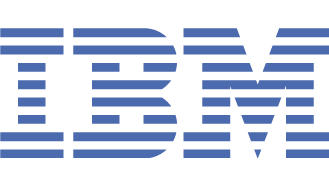IBM Touts Middleware Dominance

New benchmark results and advertising push aims to put distance between rival Oracle and its WebSphere suite
IBM has moved to establish its dominance in the middleware space, with what the company claims are new record-breaking benchmark results for WebSphere middleware on a single server representing the highest performance in the information technology industry.
In addition, the systems giant is moving to create further distance between itself and fast-rising rival Oracle in the middleware space.
In an interview with eWEEK, Dave Klavon, director of development for IBM’s WebSphere, said IBM set new records for speed of operation in Java-based software on a Power 780 server and on Power 730 Express as validated by independent SPECJ testing group. SPECjEnterprise 2010 is an industry-standard online transaction processing benchmark that is commonly used to compare the performance of middleware software for online transaction processing applications.
Klavon said these records demonstrate how businesses using IBM WebSphere middleware on Power7 hardware can get the lowest cost for performance in the industry—one-third that of the nearest competitor. Performance is an important factor for businesses. It speeds applications, reduces the amount of hardware and results in significant savings in hardware, software and energy costs.
Flexing middleware muscle
 “We’re the undisputed leader in middleware, and we have been for eight years or so,” Klavon told eWEEK. “We’re continuing to deliver speed, function and usability.”
“We’re the undisputed leader in middleware, and we have been for eight years or so,” Klavon told eWEEK. “We’re continuing to deliver speed, function and usability.”
Specifically, IBM has proved to have 76 percent higher performance than Oracle overall, 72 percent higher performance than Oracle per core and only one-third the cost for performance per core, Klavon said.
IBM has invested significantly in ensuring that its products provide the best performance value for our customers. IBM software and hardware components used in attaining these results include WebSphere Application Server, DB2 and Power Systems. The result is that companies have more responsive business applications and serve their customers more quickly and efficiently, Klavon said. Clients can save substantially with higher performance due to decreased investment in hardware and data centre space, energy costs, software license and support costs. That helps explain why IBM is the market share leader for application infrastructure middleware, Klavon said.
“We want to make the distance between us and any competitor even larger,” Klavon said. “With Oracle, it’s a dog-eat-dog world. They set this game into motion and came out saying, ‘I am IBM.’ But we have such a head start on them because we established the model. Price/performance is what we’re all about.”
Indeed, at a January 2010 Oracle event celebrating the company’s acquisition of and plans to integrate Sun Microsystems’ assets, then Oracle President Charles Phillips said Oracle wanted “to be like the IBM of the ’60s.”
DeFUSE programme pays dividends
Yet, IBM claims more than 1,000 businesses have selected IBM middleware over Oracle in 2010 as part of IBM’s DeFUSE project, citing real business benefits from the superior performance of IBM middleware. The DeFUSE project is an IBM effort to get customers to move from or select IBM’s offerings over Oracle’s Fusion middleware and related offerings.
For example, with DB2 running as low as one-third the cost of Oracle Database, more than 700 SAP clients chose DB2 over Oracle last year, IBM said. And, demand for DB2 spurred IBM to help more than 2,000 Oracle users gain DB2 skills last year.
(Page 1 of 2)